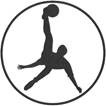In its recent decision, the EUIPO Fourth Board of Appeal overturned the Opposition Division’s earlier decision in opposition proceedings concerning ex-professional footballer Jürgen Klinsmann and Panini Societá Per Azioni (‘Panini’), which is perhaps best known for producing collectable stickers of footballers and sticker albums.
The marks

The case concerned Mr Klinsmann’s EU designation of international registration no. 1384372 for the above mark for a range of goods in classes 16. 25 and 32 (including printed matter, clothing and beers and non-alcoholic beverages, respectively) and services in class 41 (including sporting activities). Panini opposed the designation on the basis of the following marks:

1. Italian reg. no. 1539690 for services in class 41 (including sporting activities);

2. EU designation of international reg. no. 1282870 for goods in class 32 (including beers and non-alcoholic beverages);

3. Italian reg. no. 1561953 for goods in classes 16 and 25 (including stickers and clothing articles, respectively);
4. Italian reg. no. 1063937 (representation of mark not provided) for goods in classes 16 and 25 (including stickers and clothing articles, respectively);

5. EU reg. no. 4244273 for goods in class 16 (including stickers); and

6. EU reg. no. 4244265 for goods in class 16 (including stickers).
The opposition proceedings
Grounds 1-4 were based on the allegation of a likelihood of confusion between those marks and Mr Klinsmann’s. Grounds 5 and 6 were based on Panini’s alleged reputation in those marks and the allegation that Mr Klinsmann’s use of his mark would take unfair advantage of, or cause detriment to, that reputation.
The Opposition Division found a likelihood of confusion in respect of grounds 1, 2 and 3 and therefore refused the application for all of the contested goods/services and did not proceed to examine the opposition under grounds 5 and 6.
Mr Klinsmann appealed the decision asserting that the marks are dissimilar.
The appeal proceedings
The Board of Appeal found that the respective marks were, as Mr Klinsmann alleged, dissimilar on the basis that Mr Klinsmann’s mark differs from Panini’s marks in that:
- it only consists of a black and white sketch without any contours within the sign itself, which is just black;
- there is a circle around the black sketchy element;
- the silhouette is markedly different in position and direction (the thickest stroke being vertical upwards).
The Board found that “the impression of both marks as a whole is markedly different. There is not even one single ‘element’ that could be singled out from the earlier mark and then be found to ‘match’”. In the absence of any word element, no oral assessment could be performed.
The Board also continued that “the representation of a football player, as a concept, is weak for goods that have to do with football and sports in general. That extends to ‘clothing’ insofar as sportive clothing is covered, and to Class 16 as regards the goods for which the opponent claims an actual use (and reputation), namely stickers of footballers and football books, almanacs or albums”. It found that Mr Klinsmann’s mark would not be perceived unambiguously as a football player, and therefore has no clear concept; as a result there was no conceptual similarity between the marks.
As the Board found that the marks were visually and conceptually dissimilar, it could not find a likelihood of confusion or unfair advantage/detriment. Particularly noteworthy is the fact that, as Panini failed to file adequate proof of use of the mark under ground 6 (which it was requested to do by Mr Klinsmann), the opposition was unfounded in that regard. The same was true for the mark under ground 4.
Commenting on the decision, Harry Rowe, managing associate in the Mathys & Squire trade mark team, said: “As a Tottenham Hotspur fan (Klinsmann being a club legend) and a lover of all things trade marks, this case particularly piqued my interest. The case represents an important example of the narrower scope of protection afforded to figurative marks (as compared to word marks); it shows that one cannot merely rely on slight visual and conceptual similarities for a successful opposition. It also highlights the importance of filing cogent evidence of use (and the need to keep records of such evidence in the event it is required in opposition or cancellation proceedings).”
A version of this article was published in The Trademark Lawyer magazine in October 2020.

